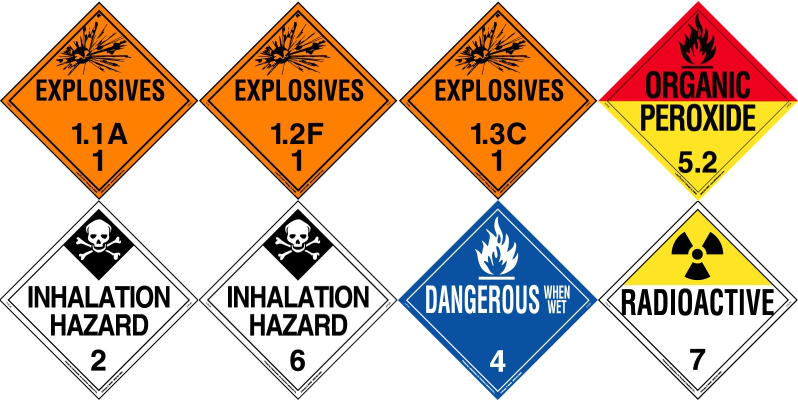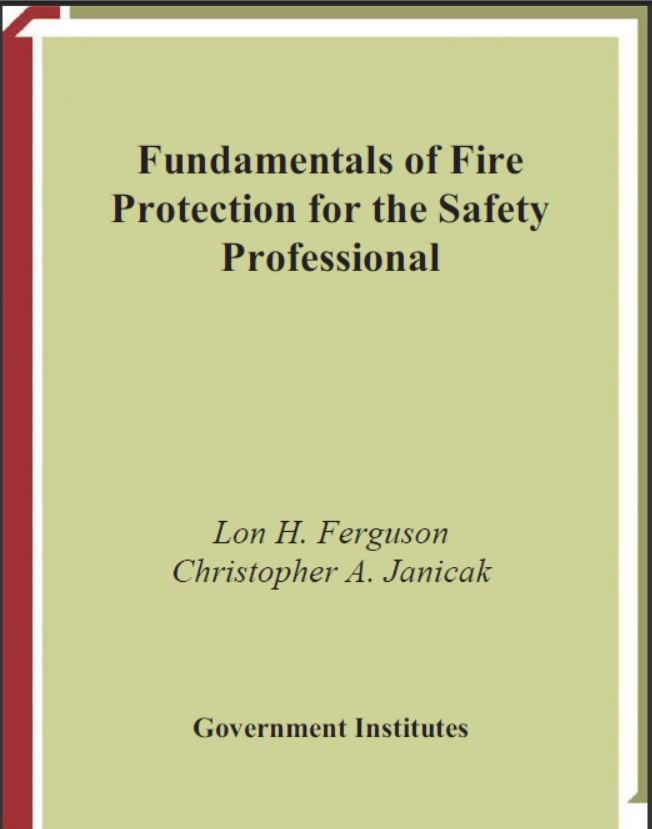Safety science is a twenty-first-century term for everything that goes into the prevention of accidents, illnesses, fires, explosions, and other events that harm people, property, or the environment (ASSE and BCSP 2000,3). Of these events, fire losses can be one of the greatest threats to an industrial organization in terms of financial losses, loss of life, loss of property, and property damage. Therefore, industrial fire protection and prevention are crucial components of any safety professional’s job, be it serving as a loss-control consultant or a safety manager.
Fires can strike any type of workplace at any time, resulting in property damage, injuries, and deaths. The adverse financial effects can be felt by an organization long after the fire is extinguished. Fire is a hazard that can potentially strike any workplace. The problem of ‘‘fire’’ in the United States today can be summarized as follows (U.S. Fire Administration [USFA] 1987, 22):
The United States has one of the highest fire-death rates per capita in the industrialized world. Each year, fires kill more Americans than all other natural emergencies combined, including floods, hurricanes, tornadoes and earthquakes.
Fire experience in the United States indicates that fires are a major problem. The United States, along with Canada, still has the worst fire-death rate for all the industrialized countries for which we have comparable data. U.S. fire deaths, based on one million per population, are almost twice the average fire-death rates for other industrialized countries (USFA 1987, 50).
As the federal government agency responsible for setting the national standards for worker safety and health, the Occupational Safety and Health Administration (OSHA) has established standards addressing each of the three key elements of fire safety (OSHA 2004, www.osha.gov):
1. Fire prevention
2. Safe evacuation of the workplace in the event of fire
3. Protection of workers who fight fires or who work around fire-suppression equipment
Industrial fire protection and prevention involves recognizing those situations that may result in an unwanted fire, evaluating the potential for an unwanted event, and developing control measures that can be used to eliminate or reduce those fire risks to an acceptable level. As is the case with any safety control measure, these controls can range from engineering strategies to administrative strategies or a combination of the two. Included in fire protection and prevention is emergency response. Emergency
response involves organizing, training, and coordinating skilled employees with regard to emergencies such as fires, accidents, or other disasters (ASSE and BCSP 2000, 6).

Table of Contents
1 Introduction to Industrial Fire Protection 1
Fire Prevention versus Fire Protection 2
Importance of Fire Safety 4
Historical Major Fire Losses in the United States 4
Trends in Fires in the United States 5
Economic Impact of Industrial Fires in the United States 5
Deaths and Injuries Due to Industrial Fires 6
OSHA and Fire Safety 12
Sources of Information 14
Summary 26
Chapter Questions 27
References 27
2 Chemistry and Physics of Fire 29
Fire Tetrahedron 29
Combustion 31
Unique Combustion Phenomena 34
Heat versus Temperature 36
Heat Transfer 37
Sources of Heat 40
Physics of Combustion 41
Fire Hazards of Materials 42
Hazardous Materials 44
Sources of Information on Hazardous Materials 47
Chapter Questions 51
References 52
3 Common and Special Hazards 55
Electricity as an Ignition Source 55
Hazardous Locations and the National Electrical Code 57
Defining Hazardous Locations 61
Safe Design of Electrical Equipment 62
National Testing Laboratories 64
Flammable Liquids and Combustible Liquids 65
Upper and Lower Explosive Limits 67
Flammable- and Combustible-Liquid Storage 67
Containers and Portable Tanks 67
Transferring Flammable and Combustible Liquids 68
Storage Cabinets 69
Inside Storage Rooms 70
Storage Tanks 73
Outside Aboveground Tanks 73
Underground Tanks 77
Tank-Vehicle and Tank-Car Loading and Unloading 78
Workplace Practices 79
Hydrogen 80
Liquefied-Hydrogen Systems 82
Acetylene 85
Oxygen 87
Liquefied-Petroleum Gas 88
Tank-Car and Truck-Loading or Unloading 90
Chapter Questions 91
References 91
4 Mechanical and Chemical Explosions 93
Anatomy of an Explosion 93
Explosives and Blasting Agents 94
Labels and Placards 95
Explosives-Handling and -Storage Procedures 97
Transporting Explosives 98
Use of Explosives and Blasting Agents 100
Oxidizing Agents 101
Ammonium Nitrate 102
Boiling-Liquid Expanding-Vapor Explosions 104
Dust Explosions 106
Cylinder Failures 107
Boilers and Unfired Pressure Vessels 107
Boiler Maintenance 110
Chapter Questions 111
References 112
5 Building Construction 113
Basic Terminology 113
Structural Elements 114
Characteristics of Building Materials 116
Fire-Resistance Ratings 120
Major Types of Building Construction 122
Fire-Protection Features 125
Protection of Openings in Fire Walls 128
Impact of Ventilation on Building Fires and Smoke
Movement 129
Interior Finish 130
Building Contents 131
Fire Loading 131
Occupancy and Commodity Classifications 132
Unique Risks for Fire in High-Rise Buildings 135
Building Codes 136
Major Provisions of Building Codes 136
Model Building Codes 137
Chapter Questions 138
References 138
6 Life Safety in Buildings 141
Loss of Life in Buildings 141
Triangle Shirtwaist Fire 141
Imperial Food Products Plant Fire 142
People’s Behaviors and Actions in a Fire 142
Origin and Development of NFPA 101 143
Building Occupancies and Life Safety 144
Building Codes and Life Safety 146
NFPA Requirements for Life Safety in Industrial Occupancies 146
Emergency-Action Plans 153
Fire-Prevention Plans 154
Chapter Questions 156
References 156
7 Hazardous Processes 159
Processes Involving Flammable and Combustible Liquids 160
Electrostatic Spray Operations 160
Spray Booths 162
Sources of Ignition 162
Ventilation 163
Flammable and Combustible Liquids: Storage and
Handling 164
Fire Protection 165
Operations and Maintenance 166
Drying, Curing, and Fusion Apparatuses 166
Aerated-Powder Coating Operations 168
Electrostatic Fluidized Beds 168
Dip Tanks and Coating Operations 169
Design and Construction of Dipping and Coating
Equipment and Systems 172
Electrical and Other Sources of Ignition 173
Ventilation 174
Storage, Handling, and Distribution of Flammable and
Combustible Liquids 175
Liquid Piping Systems 175
Fire Protection 176
Operations and Maintenance 177
Inspection and Testing 178
Training 179
Chapter Questions 179
References 179
8 Alarm and Detection Systems 181
NFPA 72 Classifications for Fire Alarm Systems 182
Power Supplies for Alarm Systems 182
Initiating Devices 183
Basic Considerations for Installation 184
Selection of Initiating Devices 184
Heat-Sensing Fire Detectors 185
Location of Heat-Sensing Fire Detectors: Spot versus Line
Devices 185
Smoke-Sensing Fire Detectors 186
Location and Spacing of Smoke Detectors 187
Radiant-Energy-Sensing Fire Detectors 188
Location and Spacing of Radiant-Energy-Sensing Fire
Detectors 189
Sprinkler-Water-Flow Alarm-Initiating Devices 189
Signal Annunciation 190
Notification Devices 191
Audible and Visible Criteria of Notification Devices 191
Reporting Systems 193
Public Fire Alarm Systems 193
Central-Station Fire Alarm Systems 193
Proprietary Supervising-Station Systems 194
Remote-Supervising-Station Fire Alarm Systems 195
Inspection, Testing, and Maintenance of Fire Alarm
Systems 196
Chapter Questions 197
References 199
9 Fire Extinguishment 201
Classifications of Fires 201
Extinguishing Agents 202
Water 202
Water Use on Special Hazards 204
Carbon Dioxide 204
Halogenated Agents 205
Dry Chemicals 206
Foam Extinguishing Agents 208
Combustible Metal Extinguishing Agents 208
Portable Fire Extinguishers 209
Labeling 209
Fire Extinguisher Rating Systems 210
Fire Extinguisher Use in the Workplace 212
Fire Extinguisher Distribution and Mounting 212
Maintenance, Inspection, and Testing 213
Training 214
Water-Based Sprinkler Systems 214
Impact of Sprinkler Systems on Fires 215
Wet-Pipe Systems 215
Water Supply and Distribution 216
Piping 217
Outside Stem and Yoke Valves 218
Water-Flow Alarms 219
Dry-Pipe Systems 220
Cross-Mains and Branch Lines 220
Sprinkler Heads 222
Fire Department Connections 223
Sprinkler-System Inspections 223
Fire Hydrants 225
Standpipe and Hose Systems 225
Chapter Questions 228
References 230
10 Fire-Program Management 231
Introduction 231
Hazard Identification 232
Quantification of Risk 232
Fire-Protection and -Prevention Strategies 234
Measurement of the Effectiveness of Fire Strategies 235
Emergency-Response Plans 236
Federal Regulations Related to Emergency Response 236
FEMA 237
OSHA 237
EPA 243
NFPA 1600: Recommended Practice for Emergency
Management 247
Planning an Emergency-Response Strategy 248
Developing the Written Emergency-Response Plan 252
Emergency Medical Care 253
Training 255
Personal Protective Equipment 256
Media Control 257
Recovery after an Emergency 258
Investigation of Emergency Incidents 260
Maintenance of Fire-Protection Systems 261
Fire Inspections 262
Hot-Work-Permit Programs 267
Chapter Questions 269
References 270
Appendix A: U.S. Environmental Protection Agency’s Integrated
Contingency Plan 275
Solutions to Chapter Questions 287
Glossary: Fire Safety Terminology 307
Index 319




